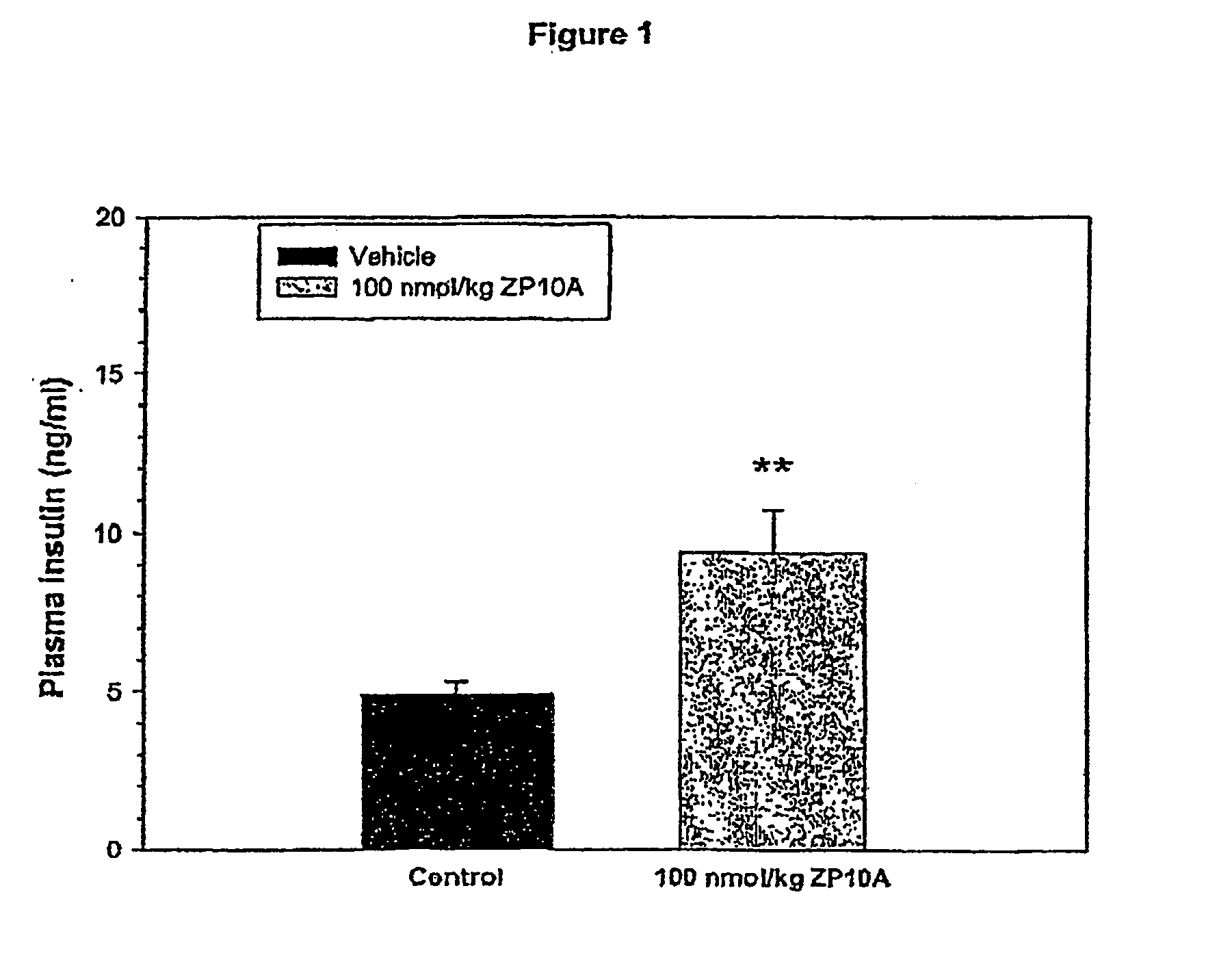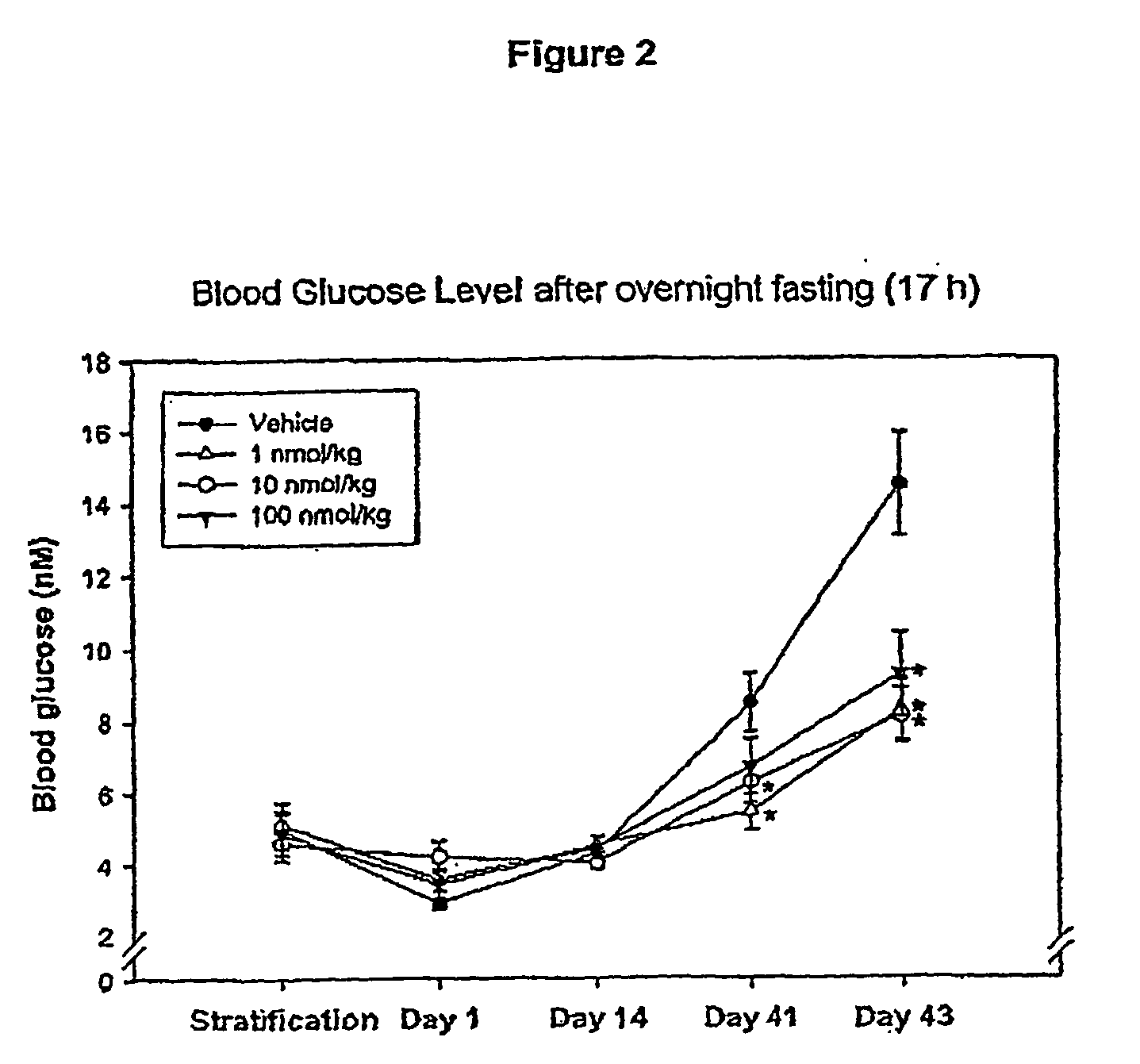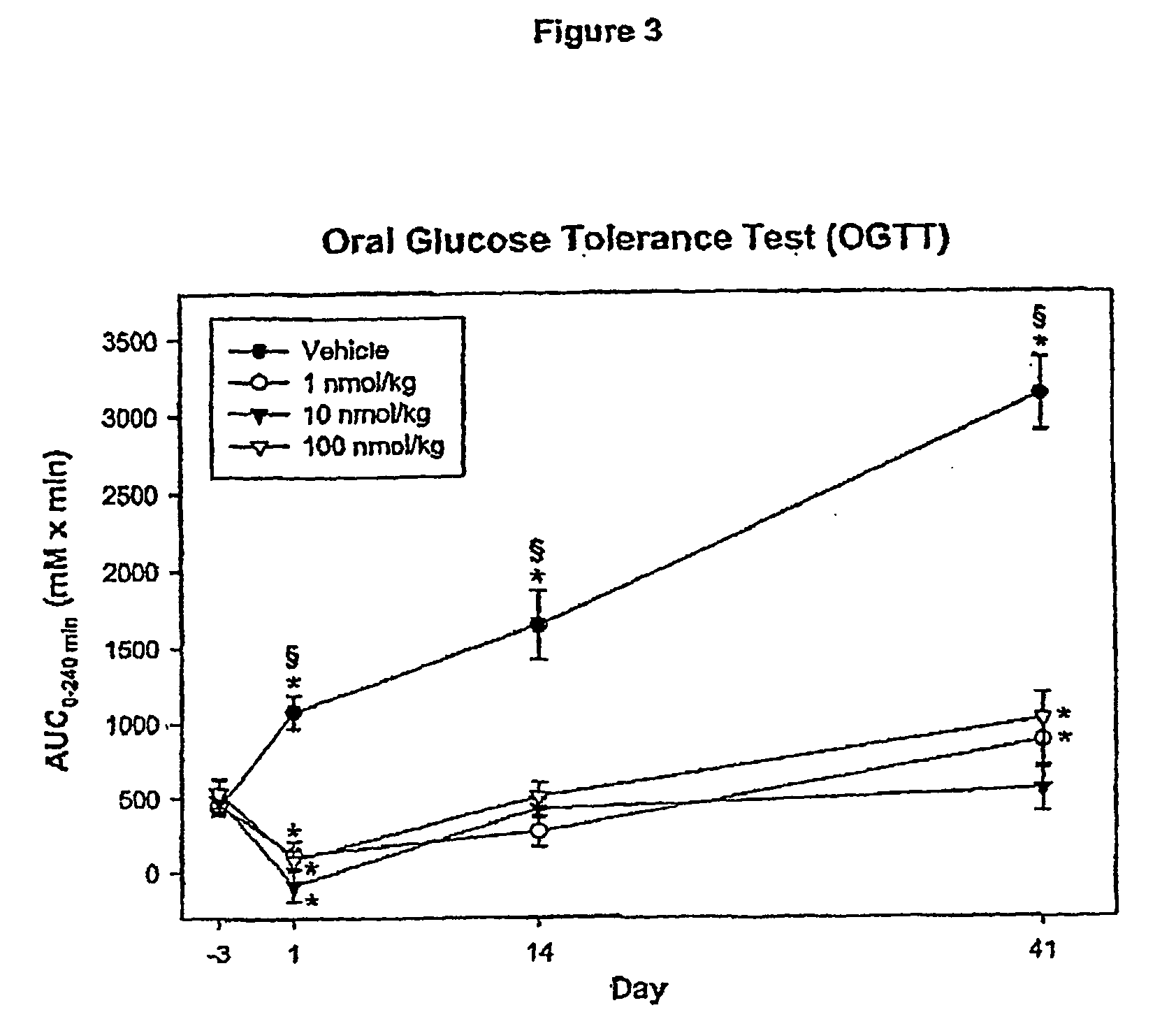Glp-1 and methods for treating diabetes
a technology applied in the field of glp-1 and diabetes treatment methods, can solve the problems of life-threatening reactions, prior methods for preventing and treating diabetes have been problematic, and there is no cure for the disease, so as to reduce the amount of diabetes, prevent or treat the disease, delay the onset of diabetes, or reduce the symptoms of diabetes
- Summary
- Abstract
- Description
- Claims
- Application Information
AI Technical Summary
Benefits of technology
Problems solved by technology
Method used
Image
Examples
example 1
GLP-1 and Compound 1 Bind GLP-1 Receptor
[0128] Receptor binding studies. These were carried out at MDS Panlabs, Panlabs Taiwan Ltd. In short, CHO-K1 cells harboring the human recombinant GLP-1 receptor were harvested. The membrane fraction was purified and used for binding assays. COMPOUND 1 and GLP-1 were solubilized in 0.4% DMSO. Membranes were incubated with different concentrations of test compounds covering 3 decades of concentrations in 20 mM Tris-HCl, pH 7.4, 5 mM MgCl2, 20 mM NaCl, 1 mM leupeptin, 1 mM PMSF and 2% BSA for 90 min at 37° C. in the presence of 0.03 nM 125I-GLP-1 (7-36) amide. Radioactivity was measured in a γ-counter and IC50-values were determined as the concentrations diminishing the specific binding (total binding minus non-specific binding in the presence of 100 nM GLP-1 (7-36) amide) by 50%.
[0129] Binding to human GLP-1 receptors. Concentrations resulting in half-maximal inhibition of binding to the human GLP-1 receptor expressed in CHO-K1 cells were 1.4...
example 2
Acute Effects of Compound 1 on Glucose Tolerance
[0132] The animals used were db / db mice 11-15 weeks old (M&B, Denmark). COMPOUND 1 was administered i.p. at doses of: 0.01, 0.1, 1, 10 and 100 nmol / kg (n=4-7 / group) fifteen minutes before the animals were subjected to an oral glucose load (1 g / kg). Prior to the study, the area under the blood glucose concentration curve obtained over a 240-minute period (AUC0-240; unit: mM·min) was used to stratify animals into five groups exhibiting similar glucose tolerances. Based on the dose-response relationship an ED50 dose was estimated.
EXAMPLE 3
Effect of Administering Compound 1 Over 42 Days
[0133] Animals included in this study were between 6 and 10 weeks old at the beginning of the study. Four days prior to the first dosing, the animals were weighed and subjected to an overnight fast (17 hrs). The fasted animals were then subjected to an oral glucose tolerance test (OGTT). The area under the blood glucose concentration curve obtained over ...
example 3
Effect of Administering Compound 1 Over 90 Days
[0142] Three days prior to the first dosing, the animals were weighed and subjected to an overnight fast. The fasted animals were subjected to an OGTT (see below). The area under the blood glucose concentration curve obtained over a 240-minute period (AUC0-240; unit: mM·min) was used to stratify animals into two groups exhibiting similar glucose tolerances. The animals were given one daily i.p. dose of COMPOUND 1, 100 nmol / kg or vehicle for a period of 50 days. The dosing was performed between 3 and 4 p.m. in order to ensure pharmacological efficacy during the period with maximal food intake, i.e. during night. After 50 days of dosing another OGTT was performed, and on this basis both the vehicle and the COMPOUND 1 treated group were re-stratified into four groups displaying similar glucose tolerances. Group 1, which initially received vehicle continued receiving vehicle. Group 2, which initially received vehicle was switched to COMPOU...
PUM
| Property | Measurement | Unit |
|---|---|---|
| Fraction | aaaaa | aaaaa |
| Fraction | aaaaa | aaaaa |
| Time | aaaaa | aaaaa |
Abstract
Description
Claims
Application Information
 Login to View More
Login to View More - R&D
- Intellectual Property
- Life Sciences
- Materials
- Tech Scout
- Unparalleled Data Quality
- Higher Quality Content
- 60% Fewer Hallucinations
Browse by: Latest US Patents, China's latest patents, Technical Efficacy Thesaurus, Application Domain, Technology Topic, Popular Technical Reports.
© 2025 PatSnap. All rights reserved.Legal|Privacy policy|Modern Slavery Act Transparency Statement|Sitemap|About US| Contact US: help@patsnap.com



